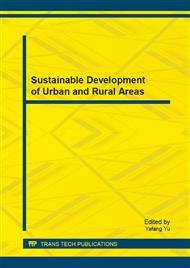[1]
Ben W, Anna H, Cynthia J, et al. A new method for calculation of the chlorine demand of natural and treated waters [J]. Water Res, 2006, 40(15): 2877-2884.
DOI: 10.1016/j.watres.2006.05.020
Google Scholar
[2]
Vasconcelos J.J., Boulos P.F. Characterization and Modeling of Chlorine Decay in Distribution Systems. AWWA, 1996: 45~47.
Google Scholar
[3]
World Health Organization. Guidelines for Drinking—water Quality First Addendum to 3rd Edition. WHO Press. 2006: 58~68.
Google Scholar
[4]
National Health and Medical Research Council. National Water Quality Management Strategy: Australian Drinking Water Guidelines. NHMRC Press. 2004: 10~16.
Google Scholar
[5]
Thomas L.O., John T.O. Water quality deterioration in distribution systems. environmental and pipeline engineering. 2000, Washington: 127~136.
Google Scholar
[6]
Lechevallier M.W. Disinfecting biofilms in a model distribution system. JAWWA. 1990, (7): 87~93.
Google Scholar
[7]
Clark R.M. Managing Water quality in distribution systems: simulating TTHM and Chlorine Residual propagation. J. Water SRT-AQUA. 1994, (4): 182~189.
Google Scholar
[8]
Munavalli G.R., Mohan K.M.S. Dynamic simulation of multicomponent reaction transport in water distribution systems. Water Research. 2004, 38(8): 1971~(1988).
DOI: 10.1016/j.watres.2004.01.025
Google Scholar
[9]
Nicholas B H, Fang Hua, West J R, et al. Bulk decay of chlorine in water distribution systems. Journal of water resources planning and management, 2003, 129(1): 78-81.
DOI: 10.1061/(asce)0733-9496(2003)129:1(78)
Google Scholar
[10]
Paula V, Sergio Y C, Dalia L. Accounting for the influence of initial chlorine concentration, TOC, iron and temperature when modelling chlorine decay in water supply. Journal of Water Supply: Research and Technology-AQUA, 2004, 53(7): 453-467.
DOI: 10.2166/aqua.2004.0036
Google Scholar
[11]
Wable O., Dumoutier N., Duguet J.P., et al. Modelling chlorine concentration a network and applications to Paris distribution network. Proceedings of the AWWARF and USEPA Conference on Water Quality Modelling in Distribution Systems. Cincinatti, 1991: 77~87.
Google Scholar
[12]
Duirk S E, Gombert B, Choi J, et al. Modeling monochloramine loss in thepresence of natural organic matter. Water research, 2005, 39(14): 3418-3431.
DOI: 10.1016/j.watres.2005.06.003
Google Scholar
[13]
Vasconcelos J J, Rossman L A, Grayman W M, et al. Characterization and Modeling of Chlorine Decay in Distribution Systems. Denver CO: AWWA and AWWARF, 1996: 105-115.
Google Scholar
[15]
James C P, Hallam N B, West J R, et al. Factors which control bulk chlorine decay rates. Water Research, 2000, 34(1): 117-126.
DOI: 10.1016/s0043-1354(99)00097-4
Google Scholar
[16]
Beatty R., Bliss P.J., Vintage D. C. Analysis of factors influencing shlorine decay in piped distribution systems. AWWA. 1996, 16: 159~165.
Google Scholar
[17]
Biswas P., Clark R.M. A model for chlorine concentration decay in pipes.Water Research. 1993, 27: 1715~1724.
Google Scholar
[18]
Psaha M.F.K. Uncertainty analysis and calibration of water distribution quality models. Tucson: University of Arizona. 2006: 26~30.
Google Scholar
[19]
Tuovinen O.H. Baterial. Chemical and mineralogical characteriatics of tubercles in distribution pipelines. JAWWA. 1980, (11): 626~632.
Google Scholar
[20]
Chen X. Stewart P.S. Chlorine Penetration into Artifical Biofilm is Limited by a Recation-diffusion Interaction. Envir. Sci and Technol. 1996, (6): 2083~(2087).
Google Scholar
[21]
Kays W.M., Crawford M.E. Convective Heat and Mass Transfer, McGraw-Hill. 1993: 172~173.
Google Scholar
[22]
Kiene L., Lu W., Levi Y. . Relative importance of the phenomena responsible for chlorine decay in drinking water distribution systems. Water Sci. Technol. 1998, 38: 219~227.
DOI: 10.2166/wst.1998.0255
Google Scholar
[23]
Lu W., Kiene L., Levi Y. Chlorine demand in water distribution systems. Water Res. 1999, 33: 827~835.
Google Scholar
[24]
Brammer L.F., Tansley N.S. Chlorine residual modelling in distribution: the improvement of taste and the maintenance of effective disinfection. International Conference on Computer Applications for Water Supply and Distribution. Leicester, 1993: 111~126.
Google Scholar


